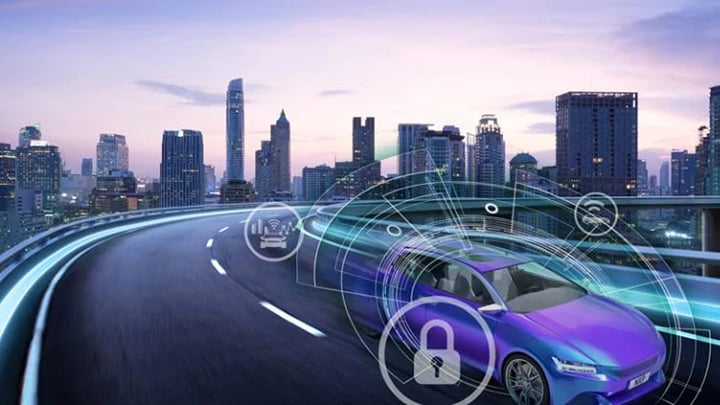Unprecedented urban growth is producing a variety of social and economic challenges. The United
Nations predicts that by 2050 roughly 70 percent of the world’s population will live in
city environments, which will significantly change in the way we live, work and move
around. It also places pressure on the environment, and underscores the need for sustainable
economic growth.
At NXP, we see urbanization as part of several larger, already established trends, including green
concepts that enhance the quality of life, and infrastructure improvements that reduce congestion
and air pollution. Technology-driven initiatives in these areas have already had a beneficial
impact on urban environments, and we think technology will only become more important as urban
populations continue to grow.
Mass transit is a starting point
Up to now, one thing that has enabled significant urban growth is mass transit. It brings outlying
areas closer to the city center, reduces congestion on roadways and reduces pollution, and makes
the city easier to navigate, explore and enjoy. More recently, secure contactless ticketing, made
possible by technologies like NXP’s MIFARE and Near Field Communication (NFC), has enhanced
public transport by providing fast, easy access, especially during rush hours. As an added
benefit, smart contactless ticketing has also gained recognition for the ways it lowers operating
costs, fosters good will, and creates loyalty – among citizens and tourists alike.
Now, with MIFARE and NFC available on smartphones and other mobile devices, what began as a way to
automate ticketing for mass transit becomes the backbone for a smart city. Expanding beyond the
installed base of mass transit, MIFARE and NFC provide a strong, flexible and secure platform on
which to build.
MIFARE/NFC = a secure starting point
Many know MIFARE as the basis of leading transport schemes, including the London Oyster Card.
While it’s true that MIFARE is used by 77 percent of transport ticketing systems worldwide,
covering almost 750 cities, the technology is also the basis for secure transactions in
micropayment, hospitality access, loyalty, leisure and more. NFC is both backward-compatible with
MIFARE and an expansion of the technology, enabling an even wider set of applications. It’s
a defining technology in the Internet of Things (IoT), and is widely used in applications that
need advanced sensor and data-gathering technologies along with secure connectivity and complete
data privacy.
MIFARE and NFC are flexible enough to support a wide range of use cases, yet are small enough to
fit in everything from plastic cards and key fobs to smartphones, watches and other wearables.
MIFARE and NFC are also designed for security, and offer support for the latest methods of
encryption, secure authentication and tamper-proofing.
A wealth of secure MIFARE/NFC possibilities
This unique combination of flexibility, size and security means MIFARE and NFC can help people do
just about anything. The two technologies are already used by millions – if not billions
– of people worldwide, in much more than transport. They’re helping people lead
greener lives by making it easier to use public transport, but they’re also helping schools
keep students safe, helping banks protect valuable assets and helping retailers give their
customers better experiences, while making it easier to reward their loyalty.
With MIFARE and NFC, you can use a single card or your smartphone as your ticket for public
transport, and then use it again and again for other things – as an entry pass to your
place of work, a concert ticket or an ID badge for accessing public-health services. Use it to pay
for lunch, do a bit of banking or make an online purchase. Access the cloud to plan the best way
to get across town, reserve a rental bike or check traffic conditions on nearby roadways. All
these examples are widely available today, despite being developed only very recently. As mobile
technologies and the Internet of Things (IoT) continue to expand, so will the number of
applications that benefit urban populations.
The missing link – the NXP layer of trust
What’s missing, however, is a secure, flexible way to link all these various applications
together. Urban applications are, by and large, being developed in isolation, with dedicated teams
addressing individual use cases in loyalty, micropayment, parking, public transport, waste
management, libraries, museums and so on. A higher layer of technology, used to unify and
aggregate these various use cases, creates the thread needed to connect everything together and
create genuinely smart applications for truly smart cities.
NXP is already creating this new layer of trust, working with partners and other industry experts
to implement advanced security, configurability and compatibility. The layer of trust, used
to issue, derive and authenticate identities, provides the security necessary to authenticate and
provision any kind of user or service, and makes it possible to support any format (credit card,
wearable, passport, ID card, transport card) at any time. If you shop downtown and spend a certain
amount, you receive a voucher for transport. Or, if you dine at a particular restaurant, you
receive special access to a popular museum exhibit. The opportunities for cross-financing and
cross-marketing enhance the urban experience, while also benefitting those who support the city
infrastructure. The layer of trust can link every use case to databases, which then provide
insights into demographics and trends in demand, enable better decisions and ensure rapid
responses to real-time events.
NXP leads the way
Playing the role of conductor, directing an orchestra of technologists, planners and developers,
NXP is committed to the future of smart cities – to help citizens and visitors make the
most of city life, and make urban environments better for everyone.




